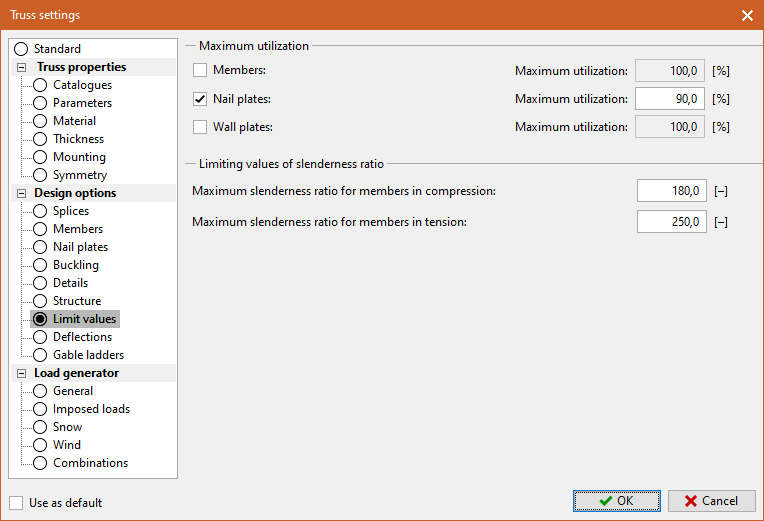Limit values
This part allows the limit values used in the assessment of the ultimate limit states to be adjusted.
Maximum utilization
The basic design of structural elements is based on a comparison of stresses and load capacities. The result is expressed in the form of a percentage of load capacity. As a standard practice in the design and assessment of structural elements, 100% is used as the limit value, i.e. the stresses of the element must not exceed the ultimate capacity of the element. In this section, this criterion can be adjusted for the different types of elements: members, nail plates and wall plates (supports). Only limit values less than 100% are allowed.
This tab contains input lines for changing the maximal utilization of members and joints. The appropriate input lines both for members and jints can be activated by ticking on the setting "Choose different admissible utilization". Entered values mean the maximal permitted utilization (in percentage). Members and joints with utilization exceeding these limits are labeled as "not satisfied".
Limiting values of slenderness ratio
The slenderness is a geometric characteristic of a member, which can be simplified as the ratio between the length of the member or its unbraced part and the smaller of the cross-sectional dimensions. The higher the value of slenderness, the thinner the member is and the more susceptible it is to geometric deviations. The slenderness can be simplified by the relation λ=l/(0,289b), where l is the buckling length of the relevant member (length of the webs or length of the outer member bays) and b is the cross-sectional dimension corresponding to the given buckling length.
Unless a design standard specifies other limits, the values of 250 for tensile members and 180 for compression members are used as default limits.
 Part "Limit values"
Part "Limit values"